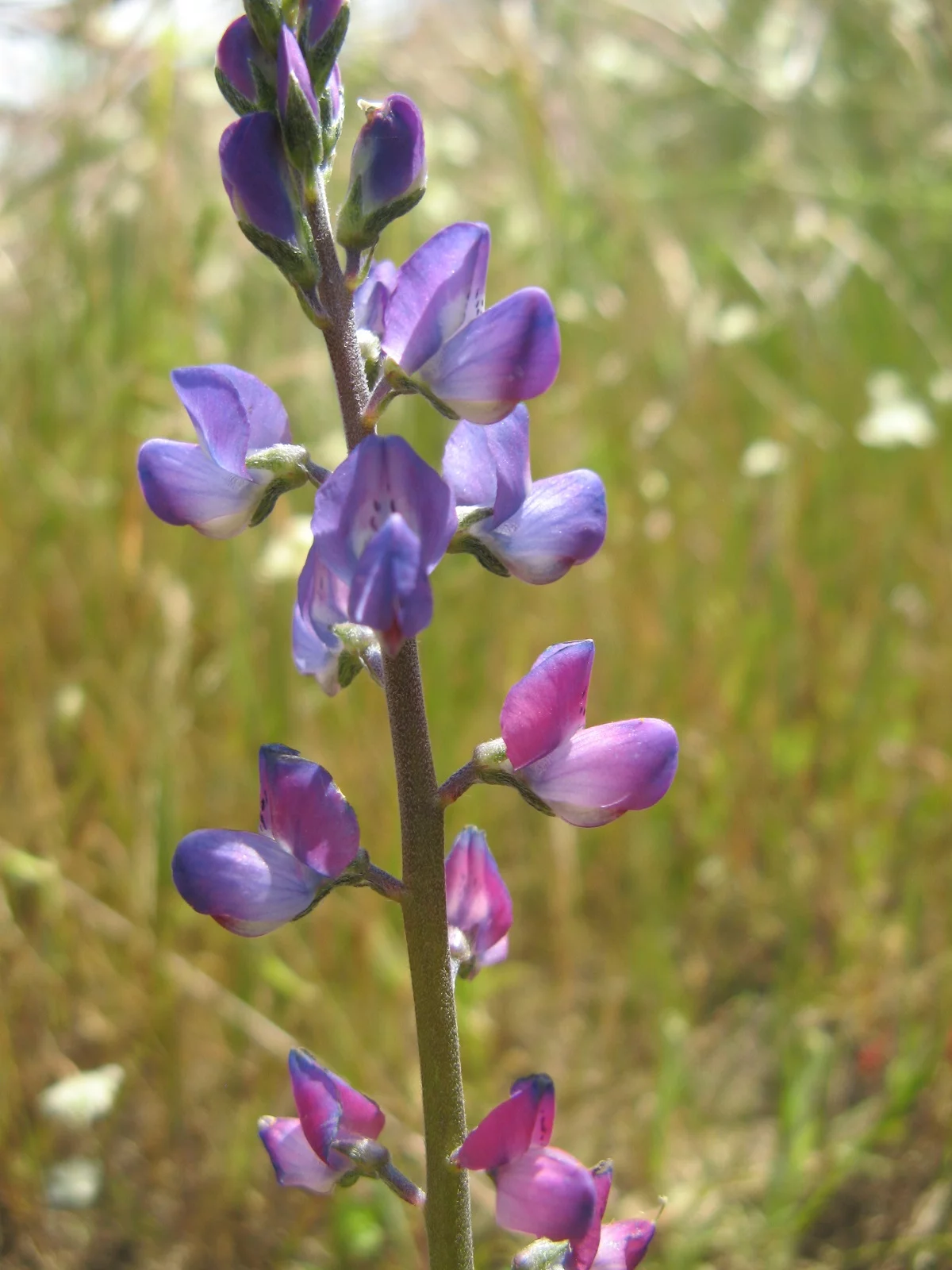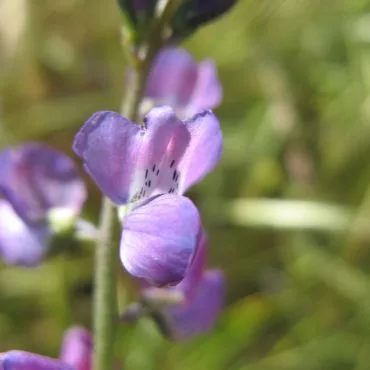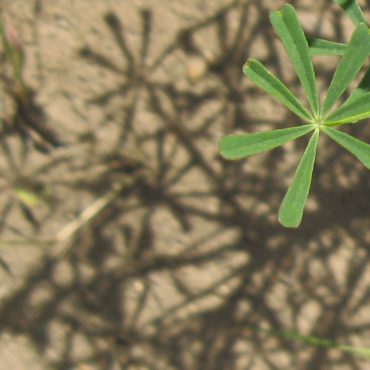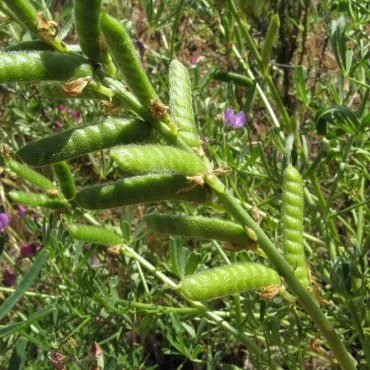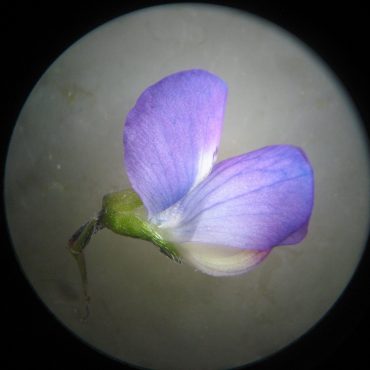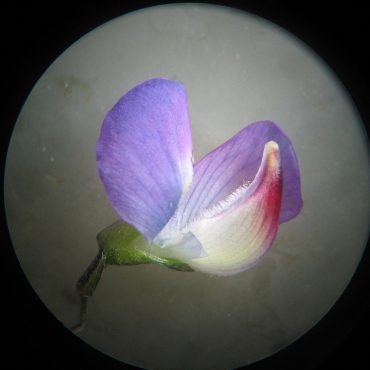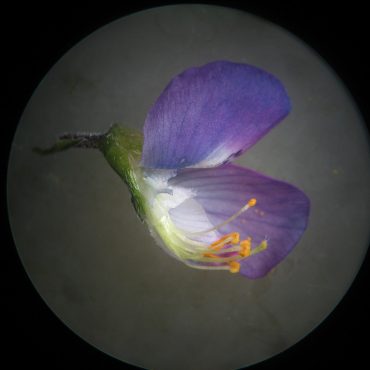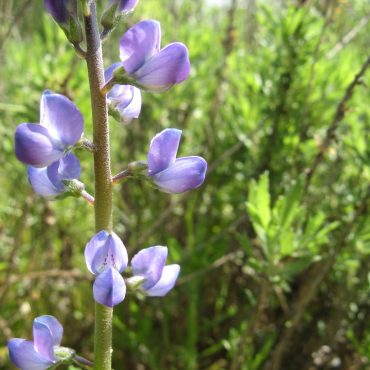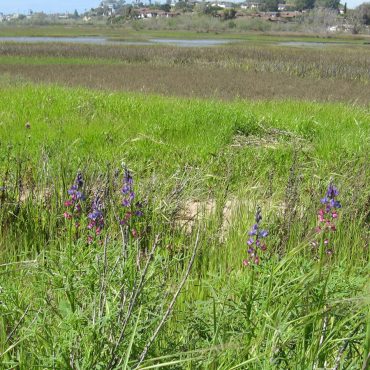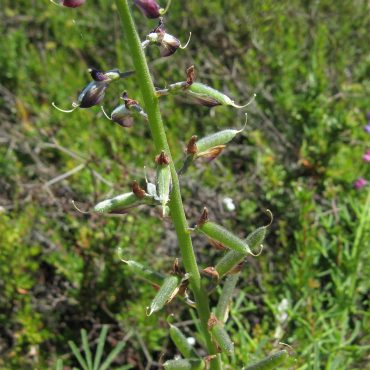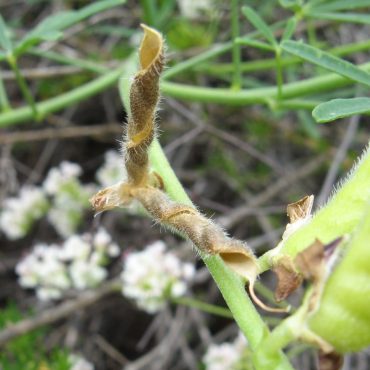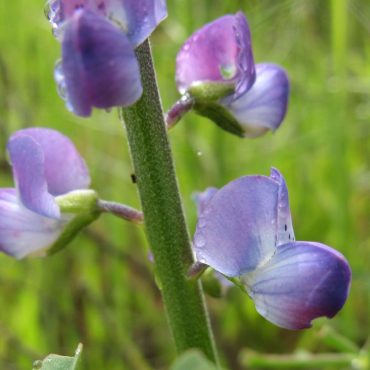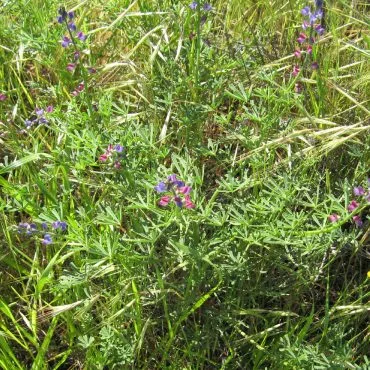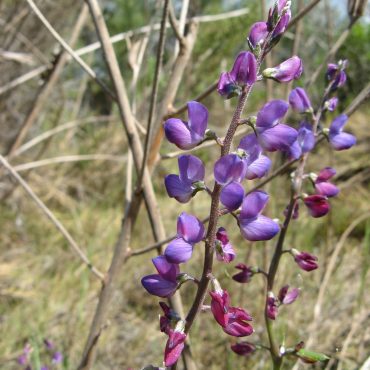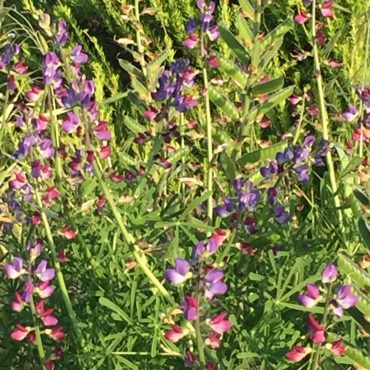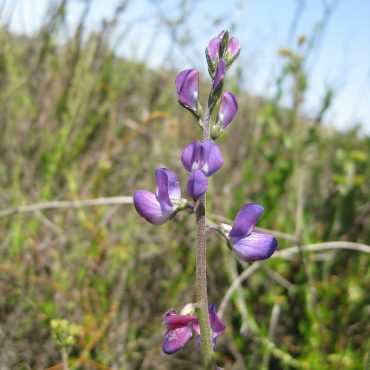Collared lupine is a rather delicate annual lupine, usually less than two feet (60 cm) high. The plant is lightly covered with small, straight inconspicuous hairs. It is sparsely branched, often with one main central stem. Lateral branches tend upward. The larger leaves are about three inches (7.5 cm) in estimated diameter, on petioles the same length or longer; leaves are palmately compound with five to seven linear leaflets less than 1 5/8 inch (4 cm) long. Leaflets are often bluntly cut at the ends.
Flowers are widely spaced along terminal stems. There are five sepals and five petals. Sepals are fused into two unequal lips, the upper with two lobes, the lower usually three. Flowers are “papilionaceous” (shaped like a pea flower): bilaterally symmetrical with one large petal, the banner, held upright, two lateral petals, the wings, directed forward and enclosing two smaller petals which together form the keel that, in turn, encloses the pistil and stamens. The banner is heart shaped or oval, purple on the edges, often shading to white at the lower center; around or within the pale area are red-purple dots. The two wings are strong to pale purple; the keel, which is rarely visible, shades from whitish to strong purple. The petals of older flowers become reddish. There are ten stamens united in a column around the pistil. The pistil consists of a superior ovary, a long curving style and a small capitate stigma. Flowers occur March through May.1
The fruit is a one chambered pod covered with short soft hairs, in shape resembling a pea pod. The dried style persists on the developing fruit. There are up to ten seeds along one side of the pod. When ripe, the two sides of the dry pod split open, often spiraling, and release the seeds.

